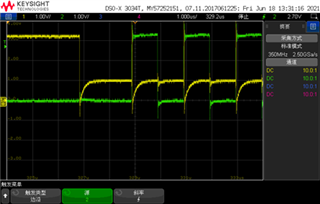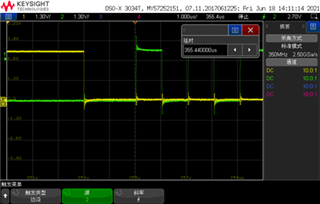Other Parts Discussed in Thread: , SN74LVC1G34
Hi,
I use a SOC to communicate with ADS1299.
When I connect the SOC SPI lines(Din Dout CS SCLK) to ADS1299 lines, the CS signal (yellow one )seems abnormal.

I check the datasheet, the CS signal is too high to be recognized.
I disconnect the SPI lines and test the SOC's CS, I get a normal signal,

I use the ADS1299EEGFE-PDK. I don not know if there are special design for the CS signal in this development board.
Can you help me with this?
Best wishes!
Yan


